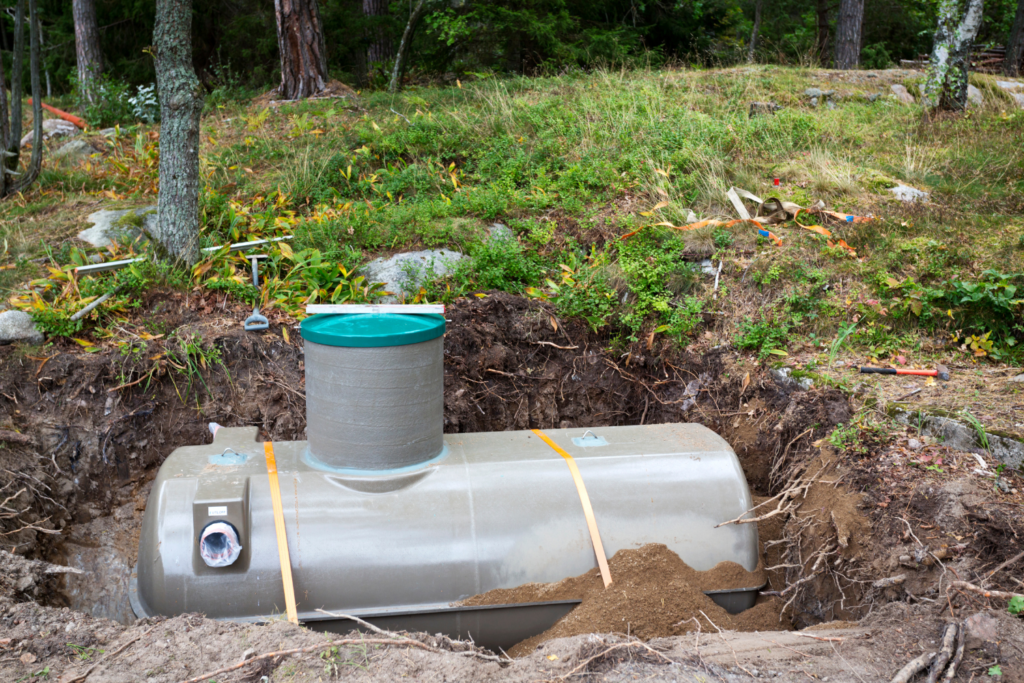Installing a septic tank is a significant decision for any homeowner relying on a septic system. If you’re building a new home or replacing an aging tank, it’s important to understand the process and what to expect to help alleviate concerns and ensure a smooth installation. In this comprehensive guide, we’ll tell you everything you need to know about septic tank installation!

Assessment and Planning
Before any installation begins, a thorough assessment of your property is crucial. A professional from your chosen plumbing company will evaluate the soil composition, groundwater levels, and the size and layout of your home to determine the most suitable location for the septic tank system and drain field. Proper placement is essential for efficient operation and to comply with local regulations.
Permitting and Regulations
Obtaining the necessary permits and complying with local regulations are integral parts of septic tank installation. Your plumbing company will handle these aspects, ensuring that the installation meets all legal requirements and environmental standards. This process may include soil testing, submitting plans to the local health department, and obtaining permits before any excavation begins.
Excavation and Site Preparation
Once permits are secured, the installation process can commence. Excavation begins with digging a large hole for the septic tank system and a trench for the drain field pipes. The size of the excavation will depend on the tank’s capacity and the layout required for optimal drainage. One must pay careful attention to maintaining the integrity of the surrounding landscape and to minimize disruption to your property.
Septic Tank Installation
A septic system can be fragile, so it’s important to carefully lower it into place during this phase. Modern tanks are typically made of durable materials such as concrete, fiberglass, or plastic, designed to withstand soil pressure and provide years of reliable service. The inlet and outlet pipes are connected to ensure proper flow of wastewater into the tank and out to the drain field. The plumbing company will verify the tank’s alignment and make necessary adjustments before backfilling the excavation.
Connection and Testing
Once the tank is securely installed, the plumbing team will connect it to your home’s plumbing system. This includes linking the pipes from your toilets, sinks, and showers to the septic tank system. A final inspection and pressure test will ensure there are no leaks or issues with the connections before covering the tank with soil.
Drain Field Installation
The drain field, also known as the leach field, is vital for the proper filtration and dispersion of wastewater. Perforated pipes are laid in gravel-filled trenches and covered with soil. The pipes allow liquid waste to seep into the soil, where natural processes break down harmful bacteria and nutrients. The size and design of the drain field are determined by factors such as soil type, water table level, and the size of your household.
Final Inspection and Maintenance Tips
Before concluding the installation process, a final inspection ensures that every component of your new septic system meets local codes and functions as intended. Your plumbing company will provide you with maintenance guidelines, including how often to pump your tank and signs to watch for that indicate potential issues. Regular maintenance, like septic tank cleaning or septic tank pumping, is key to extending the life of your septic system and preventing costly repairs down the road.
In conclusion, installing a septic tank requires careful planning, expertise, and adherence to regulations. By choosing a reputable plumbing company that is experienced in septic system service, you can ensure that the process is smooth and efficient. Understanding each step of the installation can help empower homeowners to make the right decisions about their septic systems. If you’re considering septic tank installation or have questions about maintaining an existing system, contact us at Flohawks today! A properly installed septic tank system is not just an investment in your property but also in the comfort and sustainability of your home for years to come.










